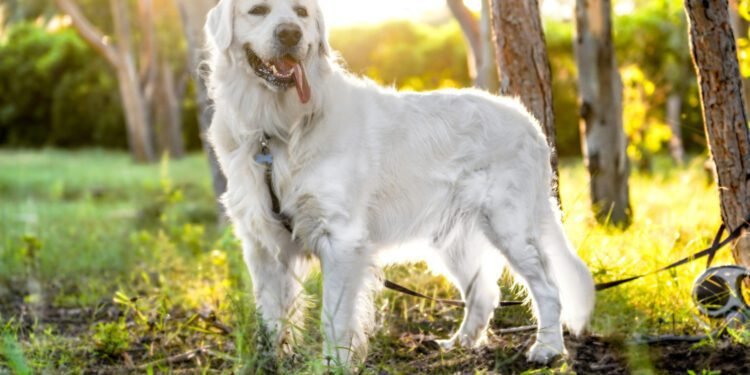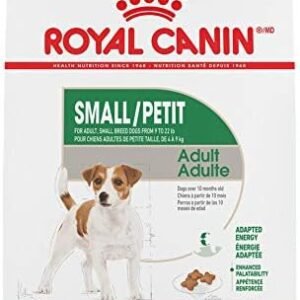When it comes to remarkable dog breeds, the Australian Retriever stands out as a true gem. Combining the charm of the Australian Shepherd and the lovable nature of the Golden Retriever, this breed offers a delightful blend of traits that make it an ideal choice for dog lovers. In this comprehensive guide, we will delve deep into the world of Australian Retrievers, exploring their unique characteristics, care requirements, and what makes them such beloved companions.
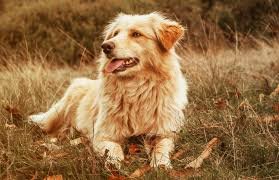
A Breed Worth Discovering
The Australian Retriever is a breed that has been gaining popularity in recent years, and for good reason. These dogs are known for their striking appearance, intelligence, and friendly disposition. As we embark on this journey to learn more about them, let’s start with some essential information:
| Field | Information |
|---|---|
| Height | 20 to 24 inches (51 to 61 cm) |
| Weight | 40 to 70 pounds (18 to 32 kg) |
| Life Span | Not known |
| Good with | Families, Active Owners |
| Temperament | Affectionate, Intelligent |
| Intelligence | Highly Intelligent |
| Shedding Amount | Moderate |
| Grooming | Regular Brushing Required |
| Exercise Needs | High |
| Energy Level | Energetic |
| Barking Level | Moderate |
| Drool Amount | Low |
| Coat Length/Texture | Medium-Length, Double Coat |
| Colors | Various |
| Patterns | Solid or Mixed |
Table of Contents
A Mix of Two Great Breeds
Australian Retrievers are the result of crossing Australian Shepherds with Golden Retrievers. This unique combination brings together the best qualities of both parent breeds. These dogs are known for their striking appearance, intelligence, and friendly disposition.
Temperament and Personality
One of the standout features of Australian Retrievers is their affectionate and intelligent nature. They are known for forming strong bonds with their families and are often described as loyal companions. Their high intelligence makes them quick learners and eager to please, which is a significant advantage when it comes to training.

Exercise Needs and Energy Levels
As active and energetic dogs, Australian Retrievers require ample exercise to stay happy and healthy. Daily walks, playtime, and mental stimulation are essential to keep them content. They thrive in environments where they can engage in physical activities, making them suitable for families with an active lifestyle.
Grooming Requirements
Maintaining the coat of an Australian Retriever is relatively straightforward. Regular brushing is essential to keep their medium-length, double coat in good condition. This helps to manage shedding and prevent matting. Additionally, they may need more frequent grooming during shedding seasons.
Colors and Coat Patterns
Australian Retrievers come in various colors, and their coat patterns can vary from solid to mixed. Their coat colors can include shades of gold, black, brown, and more. The combination of colors and patterns can make each Australian Retriever unique in appearance.
Conclusion
In this introduction to the Australian Retriever breed, we’ve touched on some key aspects of their personality, care requirements, and physical characteristics. This breed is a delightful addition to any family, thanks to its loving nature and intelligence. As we continue our journey through this guide, we will delve deeper into topics such as training, health care, and the best ways to ensure a happy and fulfilling life for your Australian Retriever companion. Stay tuned for more insightful information on this wonderful breed!
Breed History and Origin
The Australian Retriever is a captivating breed with a history that is as intriguing as the breed itself. In this section, we will take a journey back in time to explore the roots of this fascinating breed, shedding light on its development, notable traits, and how its origin continues to influence its characteristics today.
Exploring Their Roots
The story of the Australian Retriever begins with the intentional crossbreeding of two distinct and beloved breeds: the Australian Shepherd and the Golden Retriever. To fully appreciate this unique breed, let’s delve into the histories of its parent breeds:
Australian Shepherd
The Australian Shepherd, despite its name, did not originate in Australia. Its roots can be traced back to the Basque region of Europe, where it was used as a herding dog. In the 19th century, these dogs were brought to the United States, where they were further developed into the breed we know today. Their herding instincts, intelligence, and agility have made them highly sought after as working dogs.
Golden Retriever
Golden Retrievers have a more straightforward history, originating in Scotland during the late 19th century. They were originally bred for retrieving game during hunting expeditions. These dogs quickly gained popularity for their friendly nature, intelligence, and striking golden coats.
Notable Traits
The Australian Retriever inherits a remarkable combination of traits from its parent breeds, making it truly unique in the canine world. Some of these notable traits include:
- Intelligence: Both the Australian Shepherd and the Golden Retriever are renowned for their intelligence. This trait is a cornerstone of the Australian Retriever’s personality, making them quick learners and highly trainable.
- Herding Instincts: The Australian Shepherd’s herding instincts are a significant influence on the Australian Retriever. While they may not be used as working dogs, their herding background can manifest in their behavior, such as gathering family members or other pets.
- Friendly Disposition: Golden Retrievers are known for their friendly and sociable nature. This aspect shines through in Australian Retrievers, as they are typically affectionate and eager to bond with their human family members.
- Beautiful Coat: The Australian Retriever often inherits a stunning coat that can vary in color, drawing from both parent breeds. This beautiful coat adds to their visual appeal.
Relevance of Origin
Understanding the origin of the Australian Retriever is key to comprehending the breed’s characteristics today. Here’s how their ancestry continues to influence their behavior and care requirements:
Intelligence and Trainability
Both parent breeds are highly intelligent, and this trait carries forward to the Australian Retriever. Their ability to quickly grasp commands and tasks makes them suitable for various roles, including obedience competitions and agility training. To keep an Australian Retriever mentally engaged, it’s essential to provide them with stimulating activities and challenges.
Energetic Nature
The herding background of the Australian Shepherd contributes to the Australian Retriever’s energetic disposition. They thrive in environments where they can expend their energy, making them excellent companions for active individuals or families. Daily exercise and playtime are essential to keep them content and prevent behavioral issues.

Social and Affectionate
The friendly and sociable nature of the Golden Retriever shines through in Australian Retrievers. They have a strong desire to be part of the family and are known for forming deep bonds with their human companions. To ensure their well-being, it’s crucial to provide them with ample social interaction and affection.
Coat Care
The Australian Retriever’s coat, influenced by both parent breeds, requires regular grooming to keep it in top condition. Brushing helps manage shedding and prevents matting. Depending on the specific coat type inherited, they may need more attention during shedding seasons.
In conclusion, the Australian Retriever’s history and origin provide valuable insights into the breed’s unique blend of traits. Their intelligence, herding instincts, friendly disposition, and beautiful coat are all influenced by their Australian Shepherd and Golden Retriever heritage. Understanding these roots can help you better care for and appreciate this exceptional breed, ensuring a happy and fulfilling life for your Australian Retriever companion.
Understanding the Australian Retriever Breed’s Traits
In this section, we will dive even deeper into the heart of the Australian Retriever breed, exploring their physical characteristics, temperament, environmental needs, and the importance of training and socialization. Understanding these traits is crucial for anyone considering welcoming an Australian Retriever into their home.
Physical Characteristics
The Australian Retriever boasts a distinctive and appealing appearance that combines elements from both its parent breeds. Let’s take a closer look at their physical attributes:
Size
The size of an Australian Retriever can vary, but they typically fall into the medium to large category. On average, they stand between 20 to 24 inches (51 to 61 cm) tall at the shoulder and weigh around 40 to 70 pounds (18 to 32 kg). However, individual variations can occur.
Coat Type
Their coat is one of their most eye-catching features. Australian Retrievers typically have a medium-length, double coat. This means they have a dense undercoat that helps regulate their temperature and a longer outer coat that can vary in texture from wavy to straight.
Coat Color
The coat color of Australian Retrievers can vary widely, drawing from the rich palette of both parent breeds. Common colors include shades of gold, black, brown, and combinations thereof. Each Australian Retriever’s coat is a unique blend of these hues, making them visually captivating.
Distinguishing Features
While Australian Retrievers inherit a blend of traits from their parent breeds, some may exhibit unique distinguishing features, such as striking blue or heterochromic (two different colored) eyes. These distinctive traits add to their individual charm.
Temperament Overview
The Australian Retriever’s temperament is a delightful fusion of the Australian Shepherd‘s intelligence and the Golden Retriever’s friendliness. Here’s an overview of their temperament and suitability as family pets:
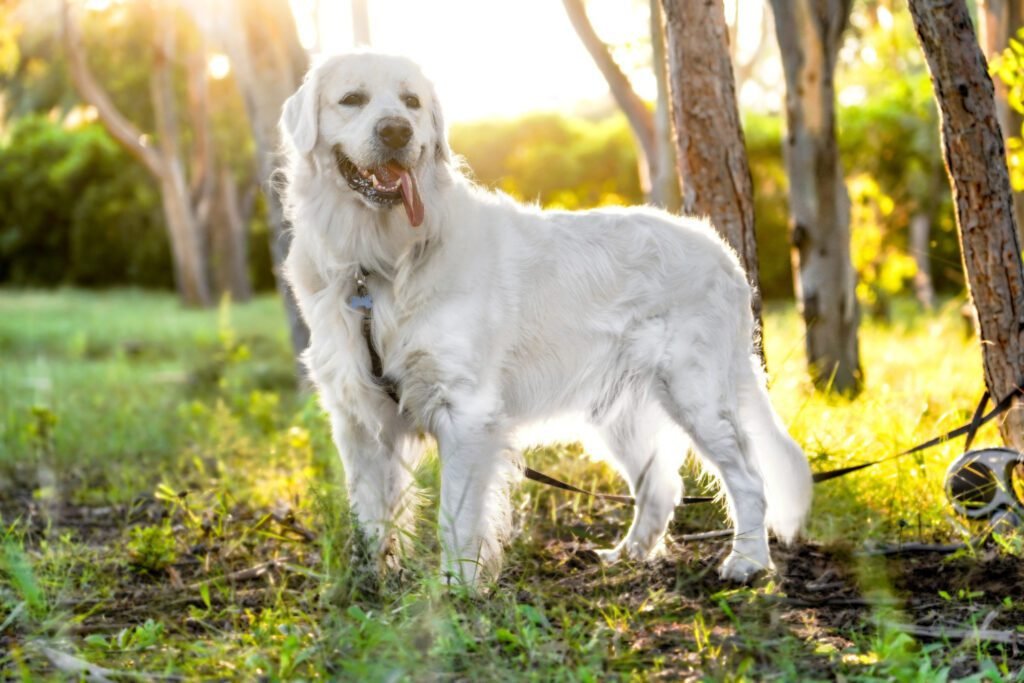
Family-Friendly
Australian Retrievers are known for their affectionate and loyal nature, making them excellent family pets. They tend to form strong bonds with all members of the household and are particularly fond of children. Their friendly disposition and patience often make them great companions for kids.
Compatibility with Other Pets
With proper socialization, Australian Retrievers can get along well with other pets in the household. Their herding instincts may lead them to gather and watch over smaller animals, making them excellent watchdogs for your furry family members.
Temperament Traits
Some common temperament traits of Australian Retrievers include:
- Affectionate: They are known for their love and affection towards their human family members.
- Intelligent: Their intelligence shines through in problem-solving and quick learning.
- Playful: They enjoy playtime and interactive activities with their family.
- Protective: Their protective instincts, inherited from the Australian Shepherd, can make them alert and responsive to potential threats.
Environment Needs
To ensure that your Australian Retriever thrives in your home environment, consider the following factors:
Space Requirements
While Australian Retrievers adapt well to various living situations, they do best in homes with ample space to move around. A yard or access to open areas for play and exercise is ideal, given their energetic nature.
Temperature Sensitivity
Their double coat provides insulation against both cold and hot weather, but it’s essential to monitor them during extreme temperatures. Ensure they have shade and water during hot weather and provide warmth during colder months.
Training and Socialization
Training and socialization are essential components of raising a well-behaved and happy Australian Retriever:
Trainability
Australian Retrievers are highly trainable due to their intelligence and eagerness to please. Positive reinforcement methods work best, and early training is recommended to establish good behavior patterns.
Socialization
Proper socialization from an early age is crucial to ensure that they are comfortable around people and other animals. This helps prevent any potential behavioral issues in the future and ensures that they are well-adjusted pets.
In conclusion, understanding the physical characteristics, temperament, environment needs, training, and socialization requirements of the Australian Retriever breed is vital for prospective owners. These dogs bring a unique blend of intelligence, friendliness, and loyalty to their families. With the right care and attention, Australian Retrievers can become cherished companions, enriching the lives of those lucky enough to have them as part of their household.
Health Considerations and Care
Taking care of your Australian Retriever’s health and well-being is paramount to ensuring a long and happy life for your furry companion. In this section, we will delve into common health issues, the average lifespan, dietary needs, exercise requirements, grooming practices, and other essential aspects of Australian Retriever care.
Common Health Issues
Australian Retrievers are generally healthy dogs, but like all breeds, they can be prone to certain health problems. It’s crucial to be aware of these issues and schedule regular veterinary check-ups to catch and address any concerns early. Common health issues for the Australian Retriever breed may include:
Hip Dysplasia
Hip dysplasia is a genetic condition that affects the hip joint. It can lead to discomfort, pain, and mobility issues. Regular vet visits and maintaining a healthy weight can help manage this condition.
Elbow Dysplasia
Elbow dysplasia is a similar condition that affects the elbow joint. It can cause lameness and pain in the front legs. Monitoring your dog’s activity and providing joint supplements as recommended by your veterinarian can help manage this issue.
Eye Problems
Some Australian Retrievers may be prone to eye conditions such as cataracts or progressive retinal atrophy (PRA). Regular eye exams can detect and address these issues early.
Allergies
Skin allergies and food allergies can affect some Australian Retrievers. Identifying and eliminating allergens from their diet or environment can help manage these allergies.
Epilepsy
Epilepsy is a neurological condition that can lead to seizures. If your Australian Retriever experiences seizures, consult your veterinarian for appropriate management and medication.
Lifespan and Longevity
The average lifespan of an Australian Retriever typically ranges from 10 to 15 years, with proper care and attention. To promote a longer and healthier life for your Australian Retriever, consider the following tips:
Regular Veterinary Check-ups
Routine vet visits are essential to monitor your dog’s overall health, catch potential issues early, and ensure they receive necessary vaccinations and preventive treatments.
Healthy Diet
Providing a balanced and high-quality diet is crucial for your dog’s longevity. Consult your veterinarian for recommendations on the best food for your Australian Retriever’s specific needs, age, and activity level.
Exercise and Mental Stimulation
Australian Retrievers are energetic dogs that require regular exercise to stay fit and happy. Ensure they get daily physical activity, such as walks, playtime, and interactive games. Mental stimulation, such as puzzle toys and training sessions, is also essential to keep their minds engaged.
Weight Management
Maintaining a healthy weight is vital to prevent obesity-related health issues. Monitor your dog’s weight and adjust their diet and exercise as needed to maintain an ideal body condition.
Diet and Nutrition
Providing the right diet and proper nutrition is essential for the well-being of your Australian Retriever. Here are some dietary considerations:
High-Quality Dog Food
Choose a high-quality dog food that meets the specific nutritional needs of Australian Retrievers. Look for options that list meat as the primary ingredient and avoid foods with fillers and artificial additives.
Portion Control
Proper portion control is essential to prevent overfeeding and obesity. Follow the feeding guidelines on the dog food packaging or consult your veterinarian for guidance on portion sizes.
Feeding Schedule
Establish a consistent feeding schedule for your Australian Retriever. Typically, adult dogs are fed twice a day. Puppies may require more frequent meals.
Fresh Water
Always provide fresh and clean water for your dog. Hydration is crucial for overall health.
Exercise and Activity
Australian Retrievers are active dogs that thrive on physical activity and mental stimulation. Here’s how to meet their exercise needs:
Daily Walks
Regular walks are essential for exercise and mental stimulation. Aim for at least 30 minutes to an hour of daily walking.
Playtime
Interactive play sessions with toys and games are a great way to keep your Australian Retriever engaged and active.
Obedience Training
Incorporate training sessions into your routine. Australian Retrievers enjoy challenges and learning new commands.
Grooming and Maintenance
Proper grooming practices are essential to keep your Australian Retriever’s coat and overall health in good condition:
Coat Care
Regular brushing helps manage shedding and prevents matting. Brush your dog’s coat a few times a week, or as needed.
Ear and Eye Cleaning
Clean your dog’s ears and eyes as recommended by your veterinarian to prevent infections.
Dental Care
Regular dental care is crucial to prevent dental issues. Brush your dog’s teeth regularly and provide dental treats or toys.
Shedding
Australian Retrievers may shed moderately, especially during seasonal changes. Be prepared for regular vacuuming and brushing during shedding seasons.
In conclusion, caring for your Australian Retriever involves attention to their health, diet, exercise, grooming, and overall well-being. By staying proactive with their care and addressing any health concerns promptly, you can ensure that your Australian Retriever enjoys a happy and healthy life as a cherished member of your family.
Choosing and Adopting an Australian Retriever Dog Breed
Deciding to bring an Australian Retriever into your life is a significant commitment and a rewarding experience. In this section, we will explore the considerations and steps involved in choosing and adopting an Australian Retriever, including the benefits of adoption, research and preparation, the adoption process, and ethical breeding considerations.
Reasons for Adoption
Adopting an Australian Retriever, or any rescue dog, comes with a host of benefits for both you and the dog. Here are some compelling reasons to consider adoption:
Giving a Second Chance
When you adopt a rescue dog like an Australian Retriever, you provide them with a second chance at a happy and loving life. Many rescue dogs have faced challenging situations, and adoption gives them an opportunity to thrive in a caring home.
Saving a Life
By adopting, you contribute to reducing the number of dogs in shelters and rescue organizations. You are, in essence, saving a life and making room for other dogs in need.
Already Trained
Many rescue dogs, including Australian Retrievers, come with basic training and may be housebroken. This can save you time and effort in the early stages of ownership.
Mixed Breeds
If you’re open to it, you may find Australian Retriever mixes in shelters. These dogs can be just as wonderful and may have fewer breed-specific health issues.
Research and Preparation
Before adopting an Australian Retriever, it’s essential to do your research and prepare for the responsibilities of dog ownership. Here are some tips:
Understanding Breed-Specific Needs
Research the Australian Retriever breed thoroughly. Understand their exercise requirements, grooming needs, and temperament. This will help you assess whether this breed is the right fit for your lifestyle.
Financial Responsibilities
Owning a dog comes with financial commitments. Be prepared for expenses such as food, grooming, veterinary care, and potential emergencies. Budgeting for your dog’s needsis crucial.
Time Commitment
Dogs, including Australian Retrievers, require time and attention. Ensure you have enough time to provide exercise, training, and companionship.
Adoption Process
The adoption process for an Australian Retriever typically involves several steps, and it’s essential to choose reputable rescues or breed-specific organizations. Here’s an overview of the process:
Research and Choose a Rescue
Start by researching rescue organizations that specialize in Australian Retrievers or mixed breeds. Look for reviews, recommendations, and their reputation in the rescue community.
Application
Complete an adoption application provided by the rescue organization. This application typically asks about your living situation, experience with dogs, and how you plan to care for the dog.
Home Visit
Many rescues conduct home visits to ensure that your living environment is suitable for a dog. They may check for safety measures and assess your preparedness for dog ownership.
Adoption Fees
Expect to pay an adoption fee. This fee often includes vaccinations, spaying/neutering, and sometimes microchipping. It helps cover the costs of care provided by the rescue organization.
Meet the Dog
Once your application is approved, you’ll have the opportunity to meet the Australian Retriever you’re interested in adopting. Spend time getting to know the dog and ensure that your personalities and needs align.
Adoption Agreement
Upon successful evaluation and compatibility, you’ll sign an adoption agreement. This document outlines your responsibilities as the dog’s owner and may include terms like providing proper care and returning the dog to the rescue if needed.
Breeding and Ethical Considerations
While adoption is a wonderful way to bring an Australian Retriever into your life, some individuals may consider purchasing a puppy from a breeder. In such cases, it’s crucial to prioritize ethical breeding practices:
Responsible Breeders
Choose a responsible breeder who prioritizes the health and well-being of the dogs. Reputable breeders conduct health screenings and genetic testing to minimize the risk of inherited health issues.
Genetic Diversity
Ethical breeders focus on maintaining genetic diversity within the breed. This helps reduce the risk of breed-specific health problems.
Avoid Puppy Mills
Avoid purchasing puppies from puppy mills or backyard breeders. These sources often prioritize profit over the welfare of the dogs and may not provide proper care.
Adoption as an Option
Consider adoption as your first choice. Many rescue organizations offer Australian Retrievers, and adopting a dog in need is a compassionate and responsible choice.
In conclusion, choosing and adopting an Australian Retriever involves thoughtful consideration, research, and preparation. Whether you opt for adoption or choose to purchase from a responsible breeder, providing a loving and caring home for your new companion is the ultimate goal. By following these guidelines and ethical considerations, you can embark on a fulfilling journey with your Australian Retriever, knowing that you’ve made a responsible and compassionate choice.
Popularity and Recognition
Understanding the popularity and recognition of the Australian Retriever breed is essential for anyone considering adding one of these delightful dogs to their family. In this section, we will explore the current popularity of the breed, its recognition by kennel clubs and breed organizations, and any notable breed varieties or subtypes that may exist.
Current Popularity
The popularity of dog breeds can vary over time, influenced by factors such as media exposure, celebrity ownership, and breed characteristics. As of the most recent data available, here’s an overview of the Australian Retriever’s current popularity:
Growing Popularity
The Australian Retriever is a breed that has been steadily growing in popularity in recent years. This is due to their appealing blend of traits from the Australian Shepherd and Golden Retriever, making them an attractive choice for families and active individuals.
Family-Friendly Appeal
Their friendly disposition and suitability as family pets have contributed to their rise in popularity. Australian Retrievers are known for their affectionate nature, making them excellent companions for children and adults alike.
Active Lifestyle
The breed’s energetic and active nature has also attracted owners who lead active lifestyles. Australian Retrievers are well-suited for activities like hiking, running, and agility training, making them appealing to those who enjoy outdoor adventures.
Social Media Presence
The breed’s presence on social media platforms has played a role in increasing their visibility and popularity. Many Australian Retriever owners share photos and videos of their beloved pets, showcasing their charming personalities.
Breed Recognition
Breed recognition is an important aspect of preserving the breed’s integrity and promoting responsible breeding practices. While the Australian Retriever is not recognized as a separate breed by major kennel clubs, it may be acknowledged by hybrid or designer dog organizations. Recognition can vary depending on the specific club or registry.
Hybrid or Designer Dog Clubs
Some hybrid or designer dog organizations may recognize the Australian Retriever, given its growing popularity. These organizations often have their own standards and requirements for breed recognition.
Parent Breed Recognition
The Australian Retriever is a crossbreed of the Australian Shepherd and Golden Retriever. Both parent breeds are recognized by major kennel clubs, such as the American Kennel Club (AKC) and the United Kennel Club (UKC). While the Australian Retriever itself may not have breed status, its parent breeds are well-established and recognized.
Notable Breed Varieties
While the Australian Retriever is primarily a crossbreed between the Australian Shepherd and Golden Retriever, there may be some variations or subtypes within the breed. These variations can be influenced by factors such as the specific lineage, the dominance of certain traits, or regional differences. Let’s explore some notable breed varieties or subtypes:
Australian Shepherd Dominant
In some cases, Australian Retrievers may inherit more traits from the Australian Shepherd parent. These dogs may have a stronger herding instinct and may excel in activities like agility and obedience. They often have a medium-length coat with variations in color and markings.
Golden Retriever Dominant
Other Australian Retrievers may lean more towards the Golden Retriever side in terms of appearance and temperament. These dogs tend to have a friendly and affectionate nature, making them excellent family pets. Their coat may be medium to long in length and often features shades of gold.
Mixed Varieties
Due to the natural variation in crossbreeds, Australian Retrievers can come in a range of appearances and temperaments. Some may have a balance of traits from both parent breeds, resulting in a unique blend of characteristics.
Regional Variations
Regional differences in breeding practices and available parent stock can also influence the appearance and traits of Australian Retrievers. Variations may exist in coat color, markings, and overall physical appearance.
In conclusion, the Australian Retriever is a breed that has been gaining popularity in recent years due to its appealing traits and family-friendly nature. While it may not be officially recognized as a breed by major kennel clubs, its recognition by hybrid or designer dog organizations and its connection to the well-established parent breeds, the Australian Shepherd and Golden Retriever, contribute to its appeal. Additionally, variations within the breed may offer prospective owners a range of options to choose from, each with its own unique qualities and characteristics.
Exercise and Activity Recommendations
Ensuring that your Australian Retriever gets the right amount and type of exercise is essential for their physical and mental well-being. In this section, we’ll provide a detailed exercise plan tailored to the Australian Retriever breed, including types of exercise, duration, and frequency. We’ll also address any breed-specific exercise needs.
Exercise Plan for Australian Retrievers
Australian Retrievers are known for their energetic and active nature. To keep them happy and healthy, it’s essential to provide regular exercise and mental stimulation. Here’s a comprehensive exercise plan:
Daily Walks
- Duration: Aim for at least 30 to 60 minutes of daily walks. Longer walks or hikes can be beneficial, especially for high-energy individuals.
- Frequency: Walks should be a daily routine. Consistency is key to meeting their exercise needs.
Playtime
- Types: Engage in interactive playtime sessions with toys like fetch, tug-of-war, or frisbee.
- Duration: Spend 15 to 30 minutes on each playtime session, with multiple sessions throughout the day.
- Frequency: Playtime should occur several times a day to provide mental stimulation and prevent boredom.
Agility Training
- Types: Agility training, which includes activities like jumping over hurdles and weaving through poles, can challenge their intelligence and physical abilities.
- Duration: Agility sessions can vary in length but typically last 15 to 30 minutes.
- Frequency: One to two agility training sessions per week can be both mentally and physically enriching.
Off-Leash Activities
- Types: If you have access to a secure, fenced area, consider off-leash activities like fetch or letting them explore.
- Duration: Allow them 20 to 30 minutes of off-leash playtime.
- Frequency: A few times a week can provide additional exercise and freedom.
Mental Stimulation
- Types: Puzzle toys, treat-dispensing toys, and obedience training can provide essential mental stimulation.
- Duration: Short training sessions, around 10 to 15 minutes, are effective.
- Frequency: Daily mental stimulation activities are beneficial.
Socialization
- Types: Socialize your Australian Retriever with other dogs at a dog park or through playdates.
- Duration: Socialization sessions can vary, but aim for at least 30 minutes.
- Frequency: Once or twice a week is a good goal for socialization.
Breed-Specific Exercise Needs
Australian Retrievers may have some breed-specific exercise needs influenced by their parent breeds, the Australian Shepherd and Golden Retriever:
Herding Instincts
- Australian Retrievers may exhibit herding instincts inherited from the Australian Shepherd parent. Activities that mimic herding, such as playing with a flirt pole or herding balls, can be mentally stimulating.
Water Activities
- Golden Retrievers are known for their love of water. If your Australian Retriever inherits this trait, consider incorporating swimming sessions into their exercise routine, especially during warm months.
- Types: Swimming is an excellent choice. If you don’t have access to a pool, natural bodies of water like lakes or rivers can be suitable.
- Duration: Swimming sessions can last 15 to 30 minutes, depending on your dog’s comfort and fitness level.
- Frequency: A couple of times a month or more, depending on the season and your dog’s preference.
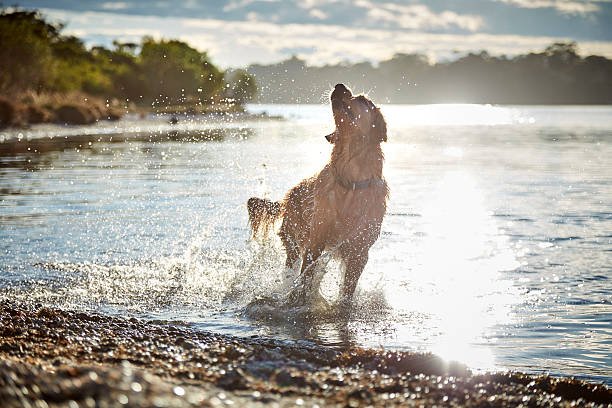
Nutrition and Feeding Guidelines
Proper nutrition is essential for your Australian Retriever’s overall health and well-being. Here are specific dietary recommendations based on their size, age, and activity level, as well as potential dietary restrictions or allergies:
Dietary Recommendations
High-Quality Dog Food
- Feed your Australian Retriever a high-quality dog food that meets their specific nutritional needs. Look for options that list meat as the primary ingredient and avoid foods with fillers and artificial additives.
Portion Control
- Practice portion control to prevent overfeeding and obesity. Follow the feeding guidelines on the dog food packaging or consult your veterinarian for guidance on portion sizes.
Feeding Schedule
- Establish a consistent feeding schedule for your Australian Retriever. Typically, adult dogs are fed twice a day, but puppies may require more frequent meals.
Age and Activity Level
- Adjust the amount of food based on your dog’s age and activity level. Active Australian Retrievers may require more calories, while older or less active dogs may need fewer calories.
Dietary Restrictions and Allergies
- Be aware of any dietary restrictions or allergies commonly associated with the breed. Some Australian Retrievers may have sensitivities to certain ingredients, such as grains or specific proteins. If you suspect allergies or sensitivities, consult your veterinarian for guidance on an appropriate diet.
Hydration
- Always provide fresh and clean water for your Australian Retriever. Proper hydration is crucial for overall health and well-being.
In conclusion, meeting your Australian Retriever’s exercise and nutritional needs is essential for their health and happiness. Regular physical activity, mental stimulation, and a balanced diet tailored to their age and activity level will help ensure that your Australian Retriever lives a long, active, and fulfilling life as a beloved member of your family. Remember to consult with your veterinarian for personalized exercise and dietary recommendations based on your dog’s specific needs.
Socialization and Training Tips
Socialization and training are crucial aspects of raising a well-behaved and well-adjusted Australian Retriever. In this section, we will provide breed-specific training tips, considering their temperament and intelligence. We’ll also offer advice on how to socialize Australian Retrievers with other dogs and people.
Training Tips for Australian Retrievers
Australian Retrievers are intelligent and eager to please, which can make training a rewarding experience. However, their herding instincts and energy levels require specific training approaches. Here are some training tips tailored to the Australian Retriever breed:
Start Early
Begin training your Australian Retriever as early as possible. Puppies are like sponges and absorb information quickly. Early socialization and obedience training can help set the foundation for a well-behaved adult dog.
Positive Reinforcement
Use positive reinforcement methods such as treats, praise, and rewards to motivate your Australian Retriever. These dogs respond well to positive feedback and will be more eager to learn and obey.
Consistency
Consistency in your training approach is key. Establish clear rules and boundaries, and ensure that everyone in your household follows them. This prevents confusion and reinforces good behavior.
Mental Stimulation
Incorporate mental stimulation into your training routine. Australian Retrievers are intelligent and need mental challenges. Puzzle toys, obedience training, and interactive games can keep their minds engaged.
Channel Energy
Provide outlets for their energy through regular exercise. A tired dog is more focused during training sessions. Plan training exercises after a playtime or walk session.
Socialize Early and Often
Socialization is essential to prevent shyness or fearfulness in Australian Retrievers. Expose them to various people, dogs, and environments from a young age. This helps them become confident and well-adjusted adults.
Basic Commands
Teach basic commands such as “sit,” “stay,” “come,” and “leave it.” These commands are essential for safety and everyday interactions.
Leash Training
Due to their herding instincts, Australian Retrievers may exhibit pulling behavior on the leash. Leash training is crucial to ensure walks are enjoyable and controlled.
Agility Training
Consider agility training as a fun and mentally stimulating activity. Australian Retrievers often excel in agility due to their intelligence and athleticism.
Socialization Tips for Australian Retrievers
Socializing your Australian Retriever is equally important as training. Proper socialization ensures that they are comfortable and well-behaved around people and other dogs. Here are some socialization tips:
Puppy Classes
Enroll your Australian Retriever in puppy classes or socialization groups. These environments provide controlled settings for interaction with other puppies and people.
Gradual Exposure
Gradually expose your dog to various situations and environments. Start with calm and familiar settings, then gradually introduce more challenging situations.
Positive Experiences
Ensure that socialization experiences are positive. Reward calm and friendly behavior with treats and praise. Avoid overwhelming situations that could create fear or anxiety.
Controlled Interactions
Supervise interactions with other dogs, especially during play. Not all dogs have the same play style, so monitor and intervene if necessary to prevent conflicts.
Varied Experiences
Expose your Australian Retriever to different types of people, including children, adults, and strangers. This helps them become comfortable around a variety of individuals.
Consistent Socialization
Socialization is an ongoing process. Continue to expose your Australian Retriever to new experiences and people throughout their life to maintain their sociable nature.
Common Behavioral Traits
Understanding the common behavioral traits of the Australian Retriever can help you build a strong bond with your dog and address any challenges that may arise. Let’s discuss both positive and challenging behaviors associated with the breed and offer advice on managing and addressing these behaviors.
Positive Behavioral Traits
Affectionate and Loyal
Australian Retrievers are known for their affectionate and loyal nature. They form strong bonds with their families and are often referred to as “velcro dogs” because they like to be close to their owners. This loyalty makes them wonderful companions and watchdogs.
Intelligent and Trainable
These dogs are highly intelligent and trainable. They quickly grasp commands and enjoy learning new tricks. Their eagerness to please their owners makes them excel in obedience training and agility activities.

Playful and Energetic
Australian Retrievers are playful and energetic, which can bring joy to any household. They love playtime and interactive games, making them great playmates for children and active adults.
Friendly and Sociable
These dogs are generally friendly and sociable, both with people and other dogs. They tend to get along well with other pets in the household and enjoy social interactions.
Challenging Behavioral Traits
Herding Instincts
Australian Retrievers may exhibit herding instincts inherited from the Australian Shepherd parent. While this can be endearing, it may lead to nipping at heels, especially with children or other animals. Early training and socialization can help manage this behavior.
Barking Tendency
Some Australian Retrievers have a tendency to bark, particularly when they are excited or alert. Proper training can help control excessive barking.
Separation Anxiety
Due to their strong attachment to their owners, Australian Retrievers can develop separation anxiety if left alone for extended periods. Crate training and gradual departures can help alleviate this issue.
Energy Levels
Their high energy levels require consistent exercise and mental stimulation. If not adequately exercised, they may become bored and engage in destructive behavior.
Shedding
Australian Retrievers have a double coat that sheds seasonally. Regular grooming and brushing can help manage shedding, but be prepared for some degree of hair in your home.
Managing and Addressing Behavioral Issues
Training and Consistency
Consistent training is crucial for addressing behavioral issues. For example, if your Australian Retriever exhibits herding behavior, provide alternative outlets for their energy, and teach them appropriate boundaries.
Socialization
Continue socialization throughout their life to prevent fearfulness or aggression. If your dog displays anxiety or aggression towards specific situations or individuals, consult a professional dog trainer or behaviorist for guidance.
Exercise and Mental Stimulation
Meet their exercise and mental stimulation needs to prevent boredom and destructive behavior. Incorporate puzzle toys, agility training, and interactive games into their routine.
Separation Anxiety
If your Australian Retriever experiences separation anxiety, gradually desensitize them to departures, and consider crate training. Seek advice from a veterinarian or canine behaviorist if the issue persists.
Grooming and Shedding
Regular grooming and brushing can help manage shedding. Brushing also provides an excellent bonding opportunity with your dog.
In conclusion, understanding the behavioral traits of the Australian Retriever breed, both positive and challenging, is essential for providing appropriate training and care. By using positive reinforcement training methods, consistent socialization, and addressing any behavioral issues promptly, you can ensure that your Australian Retriever is a well-behaved and beloved member of your family. Remember that every dog is unique, and some individual variation in behavior is expected. If you encounter specific challenges, don’t hesitate to seek guidance from a professional dog trainer or behaviorist.
Personal Stories and Testimonials
To provide a more personal and insightful perspective on the Australian Retriever breed, we’ve gathered real-life stories and testimonials from owners who have experienced the joys and challenges of raising these wonderful dogs. These anecdotes offer practical insights into the cost of owning this breed, expenses related to grooming and care, as well as the pros and cons of having an Australian Retriever as a pet.
Testimonial 1: Sarah’s Story
Owner: Sarah Johnson
Location: Los Angeles, California
Cost of Owning an Australian Retriever:
Sarah shares, “Owning an Australian Retriever has been an incredibly rewarding experience, but it’s essential to be prepared for the financial aspects. Beyond the initial adoption fee, which can range from $500 to $1,500, there are ongoing costs to consider. Food for my Australian Retriever, Bella, amounts to about $50 per month for high-quality kibble. I also budget approximately $40 per month for treats and toys. Regular veterinary visits, including vaccinations and preventive care, add up to around $500 annually. Grooming expenses vary depending on whether I use professional services or do it myself, but it’s usually around $300 to $400 per year.”

Pros of Having an Australian Retriever:
Sarah highlights, “Bella’s intelligence and trainability have made her an amazing companion. She learns new tricks and commands quickly, which has made training a breeze. Her affectionate nature and loyalty have created an unbreakable bond between us. Bella’s energy and love for play have encouraged me to stay active and enjoy outdoor activities like hiking and jogging. Having her by my side is like having a built-in exercise partner and a best friend rolled into one.”
Cons of Having an Australian Retriever:
Sarah acknowledges, “One of the challenges of owning an Australian Retriever is their need for regular exercise and mental stimulation. If I don’t provide enough physical activity and mental challenges, Bella can become restless and engage in unwanted behaviors, like chewing on furniture. Additionally, shedding is a significant issue. I’ve had to invest in a good vacuum cleaner to manage the fur. It’s also worth noting that Australian Retrievers may not be the best choice for people with severe allergies due to their shedding.”
Testimonial 2: Mark and Emily’s Experience
Owners: Mark and Emily Anderson
Location: Denver, Colorado
Cost of Owning an Australian Retriever:
Mark and Emily share, “Our Australian Retriever, Max, has brought so much joy into our lives, but it’s important to be financially prepared. Beyond the adoption fee of $800, we spend approximately $60 per month on high-quality dog food. We allocate another $30 per month for Max’s grooming needs, including regular baths and grooming tools. Annual veterinary expenses, including check-ups and vaccinations, add up to around $700. Max’s love for toys and treats means an additional $30 per month. We also invest in pet insurance for peace of mind, which costs us about $40 per month.”
Pros of Having an Australian Retriever:
Mark and Emily emphasize, “Max’s loving and playful nature has made him an excellent addition to our family. He’s great with our children and loves to join us on family outings. His intelligence and trainability have allowed us to teach him various tricks and commands, making him an obedient and well-behaved companion. Max’s loyalty and protective instincts have also provided us with a sense of security.”
Cons of Having an Australian Retriever:
Mark and Emily admit, “Max’s high energy levels have required us to commit to daily exercise routines. If we don’t provide him with enough physical and mental stimulation, he can become restless and prone to barking. Another challenge is his tendency to shed. We’ve had to adapt to regular grooming and cleaning to manage the fur. Additionally, Max’s herding instincts occasionally manifest in behaviors like nipping at heels, which required consistent training and redirection.”
Testimonial 3: Jessica’s Perspective
Owner: Jessica Ramirez
Location: Austin, Texas
Cost of Owning an Australian Retriever:
Jessica shares, “Raising my Australian Retriever, Charlie, has been a journey filled with love and commitment. In terms of expenses, I budget around $70 per month for high-quality dog food and another $40 for treats, toys, and grooming supplies. Annual veterinary expenses, including preventive care, vaccinations, and medications, add up to approximately $600. I also invest in professional grooming services every three months, costing around $60 each session. Overall, owning Charlie costs me roughly $1,200 to $1,400 per year.”

Pros of Having an Australian Retriever:
Jessica explains, “Charlie’s intelligence and trainability have made him a standout among my pets. He’s incredibly quick to learn commands and responds well to positive reinforcement training. His friendly and sociable nature has made him a hit with my friends and family, and he gets along splendidly with other dogs at the local dog park. Charlie’s playfulness and enthusiasm for outdoor activities have motivated me to stay active and enjoy the beautiful Texas scenery.”
Cons of Having an Australian Retriever:
Jessica admits, “One of the challenges of owning an Australian Retriever is their high exercise needs. If I don’t provide Charlie with enough physical and mental stimulation, he becomes restless and occasionally engages in digging or excessive barking. Shedding is also a reality, and I’ve had to invest in lint rollers and regular cleaning to manage the fur. Additionally, their herding instincts can lead to nipping behavior, which requires consistent training and redirection.”
These real-life stories and testimonials from Australian Retriever owners provide valuable insights into the costs associated with caring for this breed, as well as the pros and cons of having them as companions. While the financial commitments and challenges are real, the love, loyalty, and joy that Australian Retrievers bring into the lives of their owners are immeasurable. Each owner’s experience showcases the uniqueness and wonderful qualities of this breed while acknowledging the responsibilities that come with it.
Breed-Specific Accessories and Care Products for Your Australian Retriever
Owning an Australian Retriever comes with the responsibility of providing them with the right accessories and care products to ensure their well-being, comfort, and happiness. In this section, we’ll recommend specific accessories and care products tailored to the Australian Retriever breed’s needs. These recommendations cover grooming tools, harnesses, toys, and other essential items.
Grooming Tools
- Slicker Brush: Australian Retrievers have a double coat that can shed seasonally. A slicker brush is highly effective for removing loose hair and preventing matting. Consider a brush with fine bristles to reach the undercoat.
- Undercoat Rake: To manage their thick undercoat, an undercoat rake is a must. It helps remove loose fur and prevents matting, especially during shedding seasons.
- De-shedding Tool: Invest in a de-shedding tool designed to reduce shedding by removing loose hair from the undercoat. It’s an excellent choice to keep your home fur-free.
- Nail Clippers: Regular nail maintenance is crucial for your Australian Retriever’s comfort and health. Choose nail clippers appropriate for their size and follow guidelines to avoid cutting too close to the quick.
- Ear Cleaning Solution: Australian Retrievers may be prone to ear infections due to their floppy ears. Use a veterinarian-recommended ear cleaning solution to keep their ears clean and prevent issues.
- Toothbrush and Toothpaste: Dental care is vital. Use a dog-specific toothbrush and toothpaste to maintain their oral health. Brushing their teeth regularly can prevent dental problems.
Harnesses and Collars
- No-Pull Harness: Due to their energy and occasional pulling tendencies, a no-pull harness can provide better control during walks while reducing strain on their neck. Look for one with a front-clip design for optimal results.
- Martingale Collar: A martingale collar is designed to prevent escape and provides gentle control during leash training. It’s a good choice for Australian Retrievers who may try to slip out of regular collars.
- Personalized ID Tag: Ensure your Australian Retriever always wears an ID tag with your contact information. Personalized tags are available in various styles and materials.
Toys and Entertainment
- Interactive Puzzle Toys: Keep their sharp minds engaged with interactive puzzle toys that dispense treats when manipulated correctly. This provides mental stimulation and prevents boredom.
- Fetch Toys: Australian Retrievers love to play fetch. Invest in durable fetch toys designed to withstand their enthusiasm. Consider options that float for water play.
- Chew Toys: Provide sturdy chew toys to satisfy their natural chewing instincts and keep their teeth clean. Look for toys made of safe, non-toxic materials.
- Tug Toys: Tug-of-war is a favorite game for many Australian Retrievers. Choose strong and durable tug toys for interactive play.
Bedding and Comfort
- Orthopedic Dog Bed: Australian Retrievers are active dogs, and providing them with a comfortable and supportive bed is essential for their joint health. Consider an orthopedic dog bed with memory foam for extra comfort.
- Crate: If you crate train your Australian Retriever, ensure they have a well-ventilated and appropriately sized crate that offers security and comfort.
Feeding and Hydration
- Slow-Feeder Bowl: Some Australian Retrievers eat quickly, which can lead to digestive issues. A slow-feeder bowl helps them eat at a more controlled pace.
- Automatic Water Dispenser: Ensure your dog has access to fresh water at all times with an automatic water dispenser. This is especially useful if you’re away for extended periods.
Safety and Training
- Training Treats: Use high-quality training treats to motivate and reward your Australian Retriever during training sessions. Look for treats that are both tasty and healthy.
- Leash: Invest in a sturdy leash with a comfortable handle for daily walks and training exercises.
- Car Safety Harness or Seat Belt: Keep your dog safe during car rides with a car safety harness or seat belt attachment. Safety should always come first.
- Training Clicker: A training clicker can be a useful tool for positive reinforcement training. It helps signal to your dog when they’ve performed a desired behavior.
Dog Apparel
- Weather-Appropriate Coat: If you live in a colder climate or plan outdoor activities during the winter, consider a weather-appropriate coat to keep your Australian Retriever warm.
- Reflective Vest: For evening walks or hikes, a reflective vest enhances visibility and safety, ensuring your dog can be seen by others.
These recommended accessories and care products are tailored to the specific needs and preferences of the Australian Retriever breed. Keep in mind that every dog is unique, so it’s essential to choose items that suit your dog’s individual characteristics and lifestyle. Providing your Australian Retriever with the right accessories and care products contributes to their overall well-being and enhances the bond between you and your beloved pet.
Frequently Asked Questions (FAQs) about the Australian Retriever Breed
As you explore the world of Australian Retrievers, you may have questions about this unique breed and their care. In this section, we’ve compiled a list of 10 common questions and provided detailed answers to address various aspects of Australian Retrievers, including their characteristics, care, and more.
1. What is an Australian Retriever?
An Australian Retriever is a crossbreed between an Australian Shepherd and a Golden Retriever. They are known for their intelligence, loyalty, and playful nature. Australian Retrievers make excellent family pets and are prized for their trainability and affectionate disposition.
2. What is the size and weight of an Australian Retriever?
Australian Retrievers typically fall into the medium to large size category. On average, they stand between 20 to 23 inches (51 to 58 cm) tall at the shoulder and weigh around 50 to 75 pounds (23 to 34 kg). However, individual variations can occur.
3. What is the lifespan of an Australian Retriever?
The average lifespan of an Australian Retriever is around 10 to 15 years. Providing proper care, nutrition, and regular veterinary check-ups can contribute to a longer and healthier life for your dog.
4. Do Australian Retrievers shed a lot?
Yes, Australian Retrievers are known to shed moderately to heavily, particularly during seasonal changes. They have a double coat consisting of a dense undercoat and a longer outer coat. Regular grooming and brushing can help manage shedding.
5. Are Australian Retrievers good with children and other pets?
Yes, Australian Retrievers are generally good with children and other pets when properly socialized and trained. Their friendly and sociable nature makes them excellent family companions. However, supervision and gradual introductions are essential, especially with very young children.
6. Do Australian Retrievers require a lot of exercise?
Yes, Australian Retrievers are an active breed that requires regular exercise to stay happy and healthy. They thrive on activities such as daily walks, playtime, and engaging in interactive games. Failing to provide adequate exercise can lead to restlessness and potential behavior issues.
7. Are Australian Retrievers suitable for apartment living?
While Australian Retrievers can adapt to apartment living, it’s not their ideal environment. They do best in homes with access to a securely fenced yard where they can run and play. If you live in an apartment, be prepared to provide them with ample exercise and mental stimulation through daily walks and activities.
8. Are Australian Retrievers prone to any health issues?
Australian Retrievers may be prone to certain health issues inherited from their parent breeds. Common health concerns include hip dysplasia, elbow dysplasia, cataracts, and progressive retinal atrophy. Regular veterinary check-ups and a balanced diet can help manage and prevent some of these issues.
9. How do I train an Australian Retriever effectively?
Effective training for an Australian Retriever involves positive reinforcement techniques, consistency, and patience. Use rewards, treats, and praise to motivate and encourage good behavior. Early socialization is also essential to ensure they become well-adjusted adults. Consider enrolling in obedience classes for structured training.
10. Can I groom my Australian Retriever at home?
Yes, you can groom your Australian Retriever at home, but it requires some effort and the right tools. Regular brushing to remove loose hair is crucial. Additionally, you may need to trim their nails, clean their ears, and provide occasional baths. Some owners choose professional grooming services for more complex tasks, such as coat trimming and styling.
These frequently asked questions and answers provide valuable insights into the Australian Retriever breed and can help you make informed decisions about their care and well-being. Remember that every dog is unique, and individual characteristics may vary, so always tailor your approach to your specific Australian Retriever’s needs and personality.
Conclusion
In this comprehensive guide, we’ve delved into the wonderful world of Australian Retrievers, shedding light on their unique characteristics, care requirements, and the joys of having them as part of your family. Let’s recap the key points covered in this article, emphasize the importance of responsible ownership, and encourage the consideration of adoption for this remarkable breed.
Recap of Key Points
- Australian Retriever Characteristics: Australian Retrievers are a delightful mix of the Australian Shepherd and the Golden Retriever. They are medium to large-sized dogs known for their intelligence, loyalty, and playful disposition. These dogs typically stand 20 to 23 inches tall and weigh around 50 to 75 pounds, with a lifespan of 10 to 15 years.
- Physical Traits: They have a double coat that can shed seasonally, requiring regular grooming and brushing. Their coat colors and patterns may vary, but their expressive eyes and endearing smile are common traits.
- Temperament: Australian Retrievers are friendly, affectionate, and great with families. Their high intelligence makes them easy to train, and their loyalty and protective instincts make them excellent companions.
- Health Considerations: Like all breeds, Australian Retrievers may be prone to certain health issues, including hip dysplasia, elbow dysplasia, and eye problems. Regular veterinary check-ups, a balanced diet, and proper exercise are essential for their well-being.
- Exercise Needs: These active dogs require daily exercise and mental stimulation to prevent restlessness and behavior issues. Regular playtime, walks, and interactive games are a must.
- Grooming: Managing shedding through regular grooming and brushing is essential. They also benefit from regular nail trimming, ear cleaning, and dental care.
- Training and Socialization: Positive reinforcement training and early socialization are key to raising a well-adjusted Australian Retriever. They thrive on learning new tricks and commands.
Responsible Ownership
Owning an Australian Retriever is a rewarding experience, but it comes with responsibilities. Responsible pet ownership involves providing proper care, training, and socialization to ensure your dog is happy and well-adjusted. It also means being prepared for the financial aspects of pet ownership, including food, grooming, and veterinary expenses.
Always prioritize your dog’s well-being by meeting their physical and emotional needs. This includes regular exercise, mental stimulation, and social interactions. Proper training and consistent boundaries help your Australian Retriever become a well-behaved member of your family.
Responsible ownership also extends to health care. Regular veterinary check-ups, vaccinations, and preventive care are essential for maintaining your dog’s health and longevity. Additionally, be mindful of their dietary needs, portion control, and any dietary restrictions or allergies.
Encourage Adoption
As you consider adding an Australian Retriever to your family, we encourage you to explore adoption options. Many Australian Retrievers are in need of loving homes through rescue organizations and shelters. Adoption not only gives a deserving dog a second chance at a happy life but also enriches your own life with the love and companionship of a wonderful pet.
Here are some resources to help you get started with Australian Retriever adoption:
- Local Animal Shelters: Check your local animal shelters and rescue organizations for Australian Retrievers available for adoption. These dogs are often in need of loving homes.
- Breed-Specific Rescues: Look for breed-specific rescue organizations that specialize in Australian Retrievers. These groups are dedicated to finding homes for dogs of this breed.
- Online Adoption Platforms: Explore online adoption platforms and websites where you can search for Australian Retrievers available for adoption in your area.
- Visit Adoption Events: Attend local pet adoption events and meet potential furry companions in person. These events are a great way to connect with rescue organizations.
By choosing adoption, you not only provide a loving home to a dog in need but also contribute to the welfare of animals. Australian Retrievers are known for their loving nature, and adopting one can be a fulfilling and heartwarming experience.
In conclusion, Australian Retrievers are remarkable dogs that bring joy, loyalty, and love into the lives of their owners. With proper care, training, and responsible ownership, they make excellent family companions. Whether you’re considering bringing an Australian Retriever into your home or already have one by your side, the bond you share is sure to be one of love and companionship that lasts a lifetime.

















